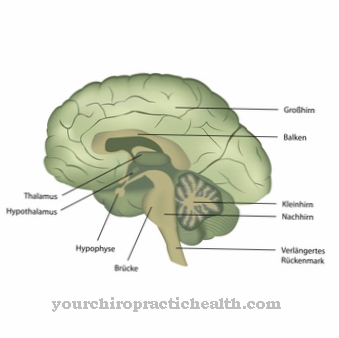The concept of mindfulness is versatile and to this day there is no generally applicable definition. Nevertheless, the ideas are usually in the same area. Concentration, caution and attention are terms that fall within the definition of the Mindfulness closely approach.
What is mindfulness

In the West, mindfulness is a term primarily derived from psychology. In English the term "mindfulness" is used for mindfulness. At the psychological level, the expression is treated and handled as a form of attention. It is a state of consciousness or perception which, among other things, can denote a certain protective mechanism.
There are some definitions. Well-known psychologists such as Kabat-Zinn, Brown and Ryan and Bishop have tried to define the term. In the entirety of the definitions there are approaches that denote mindfulness as non-judgmental and present. The term is associated with awareness, but also with clarity of consciousness and an empirical attitude in relation to reality. In addition, there is curiosity, openness and acceptance as well as the aim of a constant perception of what has been experienced or captured. Mindfulness should not contain any evaluation, but at most trigger emotions.
Mindfulness differs from concentration in one crucial point. Both refer to one type of attention, but with concentration, the perception is focused on a certain point. Everything else is hidden as far as possible and only understood subconsciously. Concentration helps people to complete tasks conscientiously and to avoid mistakes. In mindfulness, on the other hand, the area of attention expands instead of narrowing. The orientation is opposite in order to be able to absorb the abundance of perceptions.
Function & task
Basically, mindfulness denotes a fundamental quality of the human mind. In principle, it is not something that humans first have to learn. Nevertheless, it is possible to expand mindfulness through various meditation exercises. This principle is mainly used in Buddhism. The goal is to become aware of your body and mind with the help of mindfulness. Clarifying one's own feelings and sensations helps to deal with them and to understand one's own self better. In addition, attention can also be drawn to changes in one's own state of mind. Thus, those affected can talk about questions about their own well-being and possibly influence their own mind.
However, mindfulness does not only refer to the inside, but also to the perception of the outside. So it is also the goal of meditation to become aware of the environment in order to promote deeper understanding and to understand one's own reactions to external influences.
In the West there are various mindfulness exercises in the field of psychotherapy. Awareness and awareness as well as the promotion of acceptance form the basis here. These exercises are intended to help people become more aware of their surroundings and of themselves and can help to calm down, especially in irrational panic situations.
This therapy is used, for example, to cope with trauma or to combat chronic pain. In the meantime, mindfulness exercises are also used in the therapy and prevention of various physical and mental illnesses, which can increase life satisfaction.
In everyday life, people use mindfulness as a precaution. As a rule, this is not a conscious process, but something that humans do automatically, provided they are not internally distracted. Mindfulness helps to avoid accidents and to react promptly and appropriately to dangerous situations. Mindfulness thus also has a connection to the physical reflexes of the person.
You can find your medication here
➔ Medicines for relaxation & nerve strengtheningIllnesses & ailments
Mindfulness disorders can have a variety of causes. These include, for example, worries that allow the person concerned to turn his full attention inward. Attention is focused on this one point that preoccupies you. This prevents the expansion of the perception to other things and thus often to those that could combat and distract the brooding. It often helps to refocus your attention so that you can deal with problems better afterwards and cope with them differently.
Habits and routines also influence one's own mindfulness and promote dissatisfaction. Mindfulness sometimes has the goal of promoting enjoyment and also becoming aware of small things. This is often neglected in stressful everyday life - especially in industrialized countries. People get involved in less, are less aware of their environment and are prone to stress. It becomes increasingly difficult to enjoy life.
Thus, mindfulness can be forgotten to a certain extent. Exercise can help prevent this from happening or help regain mindfulness. The point is not to constantly occupy your thoughts with the future or the past, or focus too much on your own emotional life. It is not for nothing that mindfulness therapy is used in cancer patients, against depression and various anxiety disorders.
Mindfulness exercises can increase the quality of life and the triggers of stress or physical illnesses can be combated in some cases. Studies prove the positive effect of the exercises on your own well-being. In addition, they can lead to better regulation of emotions and thus not only combat stress, but also prevent it from the outset.










.jpg)

















